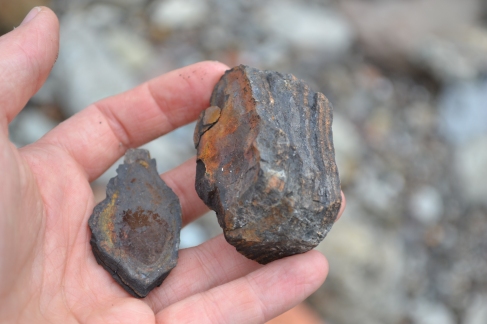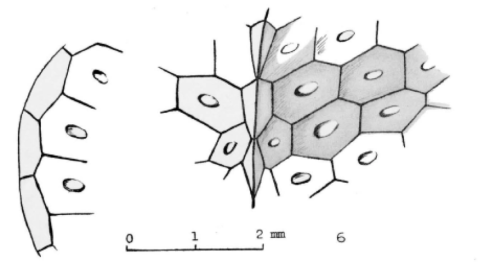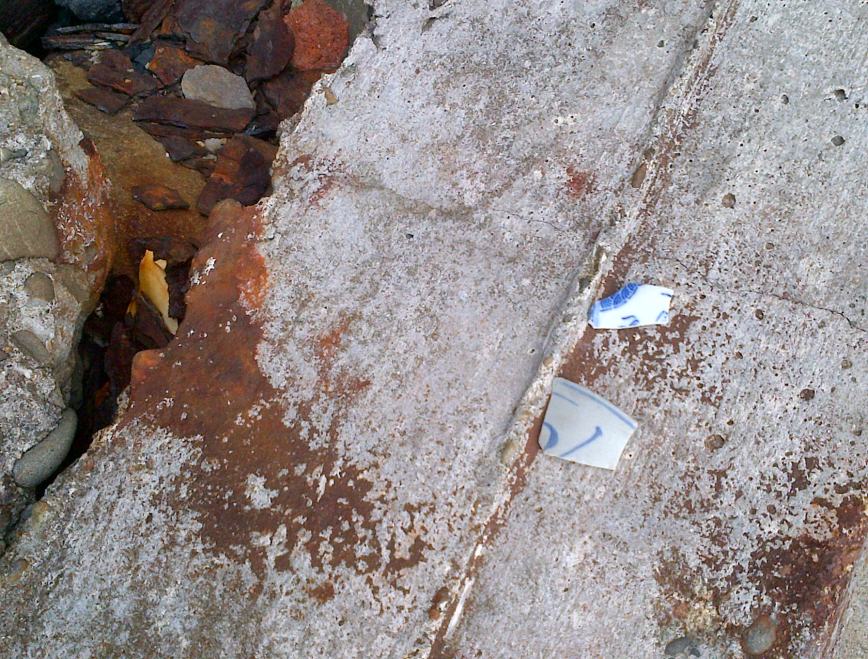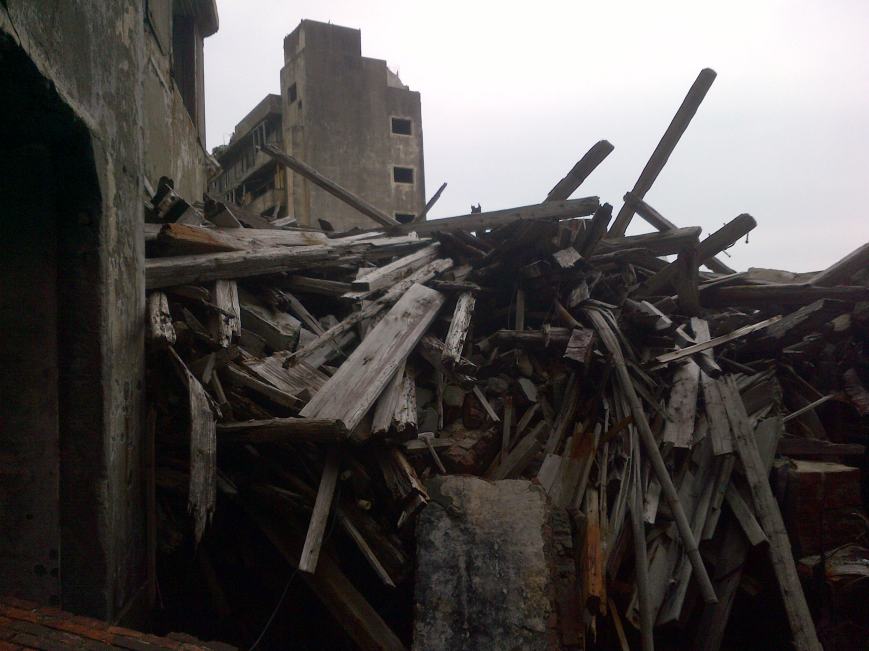Photos: Carina Fearnley
Monthly Archives: August 2013
Hogback
Geologists are detectives of deep time, tracking the formation of the earth to construct a history. In order to understand the past, uniformitarism embraces the concept that ‘the present is the key to the past’ as popularised by Charles Lyell’s Principles of Geology in 1830. These gradual changes can be found, subtly in rocks, not just in the rock itself, but in understanding its relationship with other rocks, and what interactions they have had with the environment. More recently there has been growing opposition to this idea supported by as Stephen Jay Gould through the concept of catastrophism: that Earth was shaped by a series of sudden, short-lived,violent events. As a consequence there is a need to combine these perspectives, seeing Earth’s history as a slow process, punctuated by natural catastrophic events that have often had significant impacts on Earth and its life forms.
The ability to see through the magnifying glass of deep time provides a deep respect and need to engage with rocks. In the field geologists are often seen making sense of the geology by touching, tasting, smashing, and dissecting rocks. There is a deep connection with this object that many see as just ‘rock’. It is therefore no surprise that I was rather excited about touching the rock of Hashima, the bedrock that brought people to the island in the first place. However, after a couple of hours on the island and desperately trying to see where I could find even just a natural outcrop, let alone touch the rock, I was feeling disconnected to the land I walked on. From what I could see the whole outcrop was clad in netting, concrete, walls, and plant life. I asked Sakamoto, ‘is there anywhere on the island where you can touch the rock and see it in its natural form?’ He struggled to understand, Brian had to repeat the question a few times. It was almost like the idea of touching the natural rock did not exist in Sakamoto’s memory; why would there be a need to?
There was indeed very little opportunity to engage with the limited natural environmental of the island. The odd outcrop poked out in awkward building corners, dark, unloved, and overlooked by the rest of the group that always moved on. These outcrops, as pathetic as they were for geological investigation, gave me the ability to touch, engage, and connect to something grounded. Odd rocks strewn across the island provided a peep-hole into the deformation of the coal below, and the ability to feel the waxy, dark, smothering texture of the Hashima-tan.
Perhaps a catastrophic event of Hashima is that its people lost their connection with the very material that brought them there; an island clad, armored above ground, with exposure only through its inside. It seemed people were always looking out, above, or away, using the original rock only as a spine to support itself.
Photo: Carina Fearnley
after the future
Today we are in Kagoshima meeting with UNESCO representatives interested in lobbying for former Japanese industrial sites to be granted world heritage status. Hashima, of course, is one of the sites. It will be interesting to hear what their view of heritage on Hashima is, and should be.
My own view – and this seems to be shared by many in Nagasaki, both consciously and unconsciously – is that island should be left as a monument to entropy, an ecological monument that would at once provide a critique of the folly of past industrial practices and hold out hope for a different future, a future where human beings are no longer considered as ‘lords and masters of the universe’.
In the entropic ruins of Hashima, all sorts of flora and fauna are beginning to emerge, and the kites from the mainland have started to return. The island buzzes with the sound of cicadas. I was shocked by how green it was.
Contrast this with Greenless Island, the English title of a Japanese movie set on Hashima in the 1950s. The film stock has been lost, apparently, but we saw some stills from it in the small museum to Gunkanjima that we visited on Monday. From the little I saw of it, the film looked like a social realist tragedy, a story of doomed love. Brian thought that there would be no happy ending.
Contrast this too with the melancholic black and whiteness of all those beautifully sad images of Hashima, ruin porn.
In the train trips between destinations, I have been reading Franco Berardi’s collection of essays After the Future. It’s a sobering book, full of pessimistic and complex insights; one of which is found in his critique of the narcissistic mindset that operates in political activism. For Berardi, whose history was – and still is – bound up with various forms of activist politics in Italy and France, activism hides depression, and is prey to what Lauren Berlant, in a very different context, has called ‘cruel optimism’. Against activism, Berardi argues for passivity and disconnection, in unplugging and refusing. His politics, then, could be a called a politics of enjoyment, a politics where hope (which is always futural) gives ground to pleasure (which is of the now). Bartelby, the strange, passive hero of Herman Melville’s novel Bartelby the Scrivener comes to mind. But then I am reminded too of Bartelby’s sad fate in the poor house…
In After the Future, there’s a very interesting moment where Berardi references Baudrillard’s The Transparency of Evil, and uses the image – it’s a cosmic image – of debt circling the earth like a meteor shower. Since the financial crisis of 2008, the meteor shower has hit the earth.
What fascinates me here is how metaphors of natural history are increasingly used to speak about human history, as if the two are now inseparable, and needed to be treated simultaneously. In a sense, this is the core of Berardi’s book, and it explains his interest in passivity and pleasure, in abandoning the activist drive to create future scenarios, to defer pleasure for an image that we are castigated into labouring for. Berardi wants us to give up on the future – or at least the twentieth century idea of it – and to ‘exalt tenderness, sleep, and ecstasy, the frugality of needs and the pleasures of the senses’.
More or less eighteen months after the Club of Rome published the influential text The Limits to Growth and Nicolas Georgescu-Roegen The Entropy Law and the Economic Process, Hashima island was being abandoned in the hope of continuing the Japanese economic miracle…a mere stay of execution…the transfer from coal to oil….a different type of fossil fuel.
How do we create a monument to that? A monument to a future that has passed?
Floating Fern
In December 1963, Hidekuni Matsuo visited the Hashima Colliery in the hunt for lifeforms; ancient ones. Deep in the Mitsuse Prospecting Pit, and accompanied by Mr Arimatsu of the Mitsubishi Corporation, he discovered the 2nd oldest record in Asia of the genus Salvinia in the family Salviniaceae; a floating fern. He observes that ‘the Cretaceous Salvinia was found in the grey silty shale layer containing many pyritised nodules’. Named Salvinia Mitsusense, this newly discovered species was:
‘Laminae lack apex and base: striate punctuate characters, margin entire: 11.4mm in length and 6.2mm in width. Midnerve rather thick and distinct; lateral nerves 16 in number, form an archeid at angle of 60°. Archied fine but distinctly impressed, commonly forming 4-5 regular hexagonal or pentagonal meshes. Impressions of tubercles or spines rather large. Usually one to each mesh.’
It is thought that this species, found under Hashima, grew in a bituminous bog from the late period of the Cretaceous (100.5–66 Ma). The later species of Salvinia, Palaeogene (66-23.03 Ma) and Neocene (23.03-2.588 Ma), are likely derived from this ancestor. This discovery also implies that deep coal mining in Hashima went through deep time right back to the Cretaceous, with perhaps an unconformity (no record of deposits between some of the older deposits ages). Under this lies greenschist rocks that form the basement (541-252.2 Ma).
 Undersurface of the new species, Salvinia Mitsusense.
Undersurface of the new species, Salvinia Mitsusense.
Reference: Matsuo, Hidekuni, 1967. A Cretaceous Salvinia from the Hashima Is. (GUNKAN-JIMA), outside of the Nagasaki Harbour, West Kyushu, Japan. Trans. Proc. Palaeont. Soc. Japan, N.S., No. 66. pp.49-55.
wp_000322.jpg

Hashima 31.7.13

Hashima 31.7.13

Hashima 31.7.13
Hashima 31.7.13

Hashima 31.7.13

